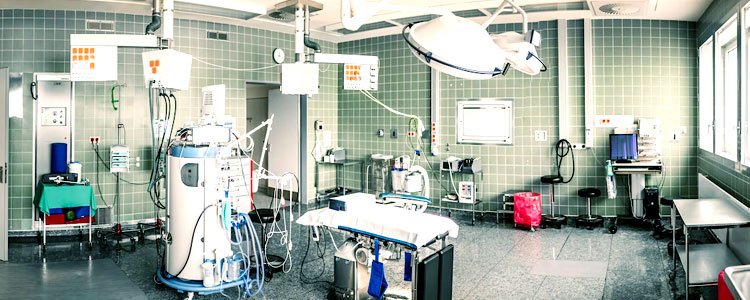
Hospital Turnkey Services
Reuse Planning
Reuse Planning involves a physical inventory of existing fixed and movable equipment items. The process also includes an objective assessment of the equipment’s current condition in order to determine its remaining useful life.
The final product, an inventory and assessment report, can then be used as a guideline for determining new requirements necessary to fulfill program objectives.
Budgeting
Equipment budgeting is a critical element of the planning process because it establishes a monetary guideline to be followed for the duration of the project. It involves a departmentalized room-by-room listing of medical equipment requirements. Two key factors that directly impact the budget are the condition of existing equipment and the types of departments included in your project. Obviously, some departments are much more equipment intensive than others.
We believe in a consensus building approach while utilizing our hospital backgrounds to help decipher realistic needs versus “wish list” planning. Based on our experience, we routinely challenge user requests when appropriate. The final outcome is a comprehensive budgeting process that will lend monetary control to your building project.
Specification Development
Equipment specification is a systematic approach for developing equipment requirements for major expansion programs taking into account the functional space program, required level of technology, budgetary guidelines, and reuse of existing equipment.
The process involves meticulous planning, tight adherence to schedules, and coordination with all those involved in the project. User input is accomplished through a series of departmental interviews. The end product is a fully specified plan of new requirements suitable for competitive bidding.
Architectural Engineering Support
One of the primary reasons for hiring a medical equipment planning consultant is to work closely with the architect, engineers, and contractors to be certain that the building design will accommodate current and future medical technology. A good consultant can quickly justify his or her fee by identifying design flaws that will eventually result in problems.
Careful coordination with the A/E team on medical equipment space and utility planning will minimize costly change orders and result in a more comprehensive planning process.
Procurement Management
Procurement management is the process of strategizing and applying the most effective procurement techniques to insure clients of a fair and competitive price.
This involves integration of equipment specifications and vendor instructions into a competitive bid document. The service also includes bid analysis, purchase recommendations, procurement scheduling, purchase order preparation, and delivery tracking.
Installation Relocation Planning
Installation of new equipment and relocation of existing equipment requires meticulous scheduling and coordination with vendors, department managers, movers, and the contractor. Precise sequencing of existing equipment relocation is critical to ensuring timely deliveries and proper installation of new equipment, resulting in successful activation of your new facility.
Our extensive experience in managing the installation and relocation of medical equipment will avoid delays and confusion while facilitating a smooth transition into the newly constructed space.
Activation Planning
Activation planning is an orderly and systematic process to ensure that all of the tasks required to occupy a new building are accomplished in a logical, cost effective, and timely sequence. The process involves regularly scheduled meetings with representatives from the departments preparing to occupy the new space and support departments such as housekeeping, security, information systems, etc.
The meetings involve meticulous documentation and monitoring of required tasks and the individuals accountable for them, with targeted completion dates necessary to activate the new facility.
Technology Assessment
Medical equipment technology planning provides an objective assessment of current medical equipment technology status and enhances management’s ability to evaluate and prioritize the organization’s future capital equipment requirements. Hospitals are provided with a mechanism for periodically updating and replacing outdated technology in accordance with a long-range capital equipment plan.
Scope of Work
Equipment Planning
Electrical Works Support for Medical Equipment
Medical Gas Pipeline Systems
Design of Critical Areas like OT, CSSD, DIALYSIS, ICU’S (MICU/ SICU/ NICU/ PICU: Labour Ward etc) based on specific requirements
